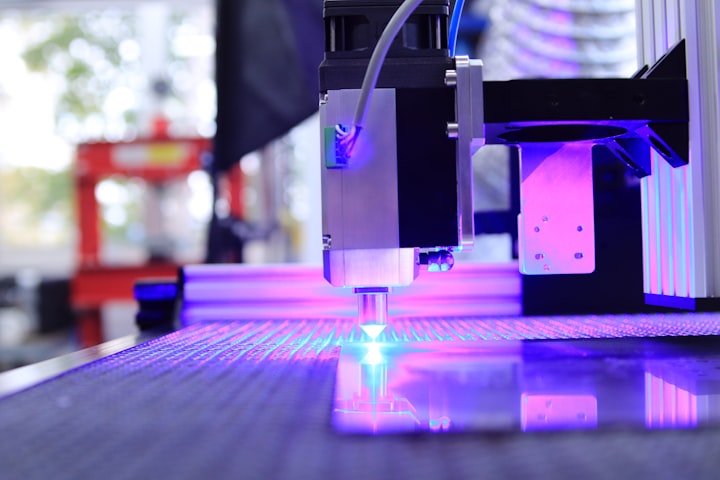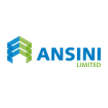
Plastic fabrication is the process of transforming raw plastic materials into finished products or components. The most popular techniques used for this are variations of thermoforming and (CNC) machining (although there are others). Plastic fabrication enables the creation of a wide range of plastic products and hence is essential to the operation of many industries.
Thermoforming, shaping plastic through heat
Thermoforming is a versatile plastic fabrication method that involves shaping plastic sheets through the application of heat. It typically involves the following steps.
Heating the plastic sheet
The plastic sheet is heated using methods such as convection ovens, infrared heaters or radiant heaters. The heating process softens the plastic, making it pliable.
Shaping the plastic
The heated plastic is draped over a mould and then pushed against it by mechanical force.
Cooling and finishing the formed product
After the plastic has taken the desired shape, it is cooled down to solidify. This can be achieved through cooling fans, water baths or other cooling methods. Once cooled, the formed product undergoes trimming, cutting or additional finishing processes to remove any excess material or improve its appearance.
Advantages of thermoforming
Thermoforming has become a popular approach to plastic fabrication because it has a lot to recommend it. Here are its five main advantages.
Cost-effectiveness
Thermoforming is a cost-efficient method for producing plastic parts compared to other fabrication techniques, such as injection moulding or CNC machining.
Ability to scale
Thermoforming can be used to produce batches of various sizes from very small to very large.
Design flexibility
Thermoforming allows for complex shapes, contours and textures to be easily incorporated into the final product. It offers design freedom and enables customization according to specific requirements.
Rapid prototyping
Thermoforming allows for quick production of prototypes, facilitating the testing and evaluation of product designs before mass production.
Material variety
Thermoforming can be performed with a wide range of thermoplastic materials, including ABS, PVC and polycarbonate.
Disadvantages of thermoforming
As with everything, however, thermoforming also has its disadvantages. Here are the four main ones.
Limited wall thickness control: Thermoforming can have limitations when it comes to achieving precise control over wall thickness, especially in complex shapes or deep-drawn parts. This can result in variations in thickness across the formed product, which may affect its structural integrity and performance.
Limited dimensional accuracy
Compared to other fabrication methods like CNC machining, thermoforming may result in slightly less precise dimensional accuracy. Factors such as material shrinkage and stretching during the forming process can lead to minor variations in the final dimensions of the product.
Tooling and setup costs
Creating moulds or dies to match the desired product shape can involve significant upfront costs, especially for complex designs. This aspect may pose a challenge for small-scale or customised production runs.
Limited material options for high-performance applications
Thermoforming is unlikely to be suitable for products intended to operate in extreme conditions. In particular, products created by thermoforming are unlikely to offer high-temperature resistance.
Surface finish limitations
Thermoformed parts can exhibit minor surface imperfections, such as visible parting lines or texture variations. Additional post-processing steps may be necessary to achieve the desired surface quality.
Vacuum Forming and creating hollow plastic shapes
Vacuum forming is a variation of thermoforming. The process of vacuum forming is almost identical to the process of thermoforming. The key difference is that vacuum forming uses a vacuum to pull the plastic into shape. Regular thermoforming uses pressure to push it into shape. This means that vacuum forming can be used to create hollow plastic shapes.
Advantages and disadvantages of vacuum forming
As you would expect, the advantages and disadvantages of vacuum forming are essentially the same as for regular thermoforming.
Injection moulding provides efficiency and precision
Injection moulding is another variation of thermoforming, but its production process has significant differences from the process of regular thermoforming. Here are the key steps involved in the process of injection moulding.
Mould design and preparation
The mould is typically made from steel or aluminium and is precision-machined to create the desired geometry.
Plastic material preparation
Plastic pellets or granules are fed into the injection-moulding machine's hopper where they are heated until they melt.
Injection moulding machine operation
The injection moulding machine applies high pressure to force the plastic into the mould.
Cooling and ejection of the moulded part
Once the plastic has solidified, the mould opens, and the moulded part is ejected using ejector pins or other mechanical methods.
Post-processing and quality control
The ejected part may undergo additional post-processing steps, such as trimming, deburring or surface finishing. It will also be checked for compliance with specifications such as dimensional accuracy and strength.
Advantages of injection moulding
Injection moulding has three key advantages over other plastic fabrication options. These are as follows.
High production efficiency
Injection moulding enables the production of large quantities of plastic parts with short cycle times, making it ideal for mass production.
Design versatility
Complex shapes, intricate details and undercuts can be easily achieved through injection moulding. It allows for the incorporation of features like threads, inserts and multiple components into a single part.
Material variety
Injection moulding supports a wide range of thermoplastic materials, including ABS, polypropylene, polycarbonate and more, allowing for diverse applications and material properties.
Disadvantages of injection moulding
With that said, injection moulding also has its drawbacks. Here are the two main ones.
High initial investment
The cost of tooling, mould design and machine setup for injection moulding can be significant, particularly for complex and customised parts. This may pose a barrier to small-scale production or prototypes.
Design limitations
Certain design considerations, such as draft angles, wall thickness and uniform cooling, are crucial to ensure successful injection moulding. Design complexity and limitations may arise in cases where these factors are not adequately addressed.
Part complexity and geometry limitations: While injection moulding can produce intricate parts, there may be limitations in terms of deep-drawn features, thin walls or complex geometries that require special considerations or alternative fabrication methods.
CNC machining provides precise and versatile plastic fabrication
CNC (Computer Numerical Control) machining is completely different from thermoforming. It uses computer-controlled machines to remove material from a solid block or sheet of plastic to create a desired shape.
Here are the main steps in the CNC machining process.
Designing the computer-aided design (CAD) model
This is a digital blueprint that guides the CNC machine in executing the machining operations.
Programming the CNC machine
The CAD model is converted into machine-readable instructions through computer-aided manufacturing (CAM) software.
Material selection and setup
A suitable plastic material is chosen based on the requirements of the part, such as strength, temperature resistance or aesthetic properties. The selected plastic material is then secured onto the CNC machine's work-table or fixture, ensuring proper alignment and stability during machining.
CNC milling or cutting process
The CNC machine uses specialised cutting tools, such as end mills or drills, to remove material from the plastic block or sheet according to the programmed tool paths. The cutting tools are precisely controlled by the CNC machine.
Finishing and quality control
After the initial machining is complete, the formed part may undergo additional finishing operations such as sanding, polishing or surface treatments to achieve the desired surface finish and texture. It will also be quality-checked to ensure that it meets the key specifications.
Advantages of CNC machining
CNC machining offers three key advantages over other forms of plastic fabrication. These are as follows.
Precision
CNC machining ensures consistent quality and dimensional accuracy across multiple parts. This means that it can be used to produce items with intricate details such as undercuts, threads and pockets.
Versatility
CNC machines can support a wide range of plastic materials, including thermoplastics and engineering plastics.
Prototyping and low-volume production
CNC machining is well-suited for rapid prototyping and small to medium-scale production runs. It offers flexibility and quick turnaround times.
Disadvantages of CNC machining
Compared to other forms of plastic fabrication, the two main drawbacks of CNC machining are as follows.
Higher cost for complex parts
CNC machining requires specialised tooling. It also tends to need longer production times and can be relatively wasteful of materials. These factors can all lead to relatively high costs.
Material limitations
Certain plastics with poor machinability or high melting points may pose challenges in CNC machining. These materials may require alternative fabrication methods.
Plastic fabrication can provide various results through the many engineering techniques to create custom and unique shapes, moulds and so on for a wide range of sectors. Many sectors that benefit from plastic fabrication are medical, agricultural, aerospace, leisure and industrial.






Comments
There are no comments for this story
Be the first to respond and start the conversation.